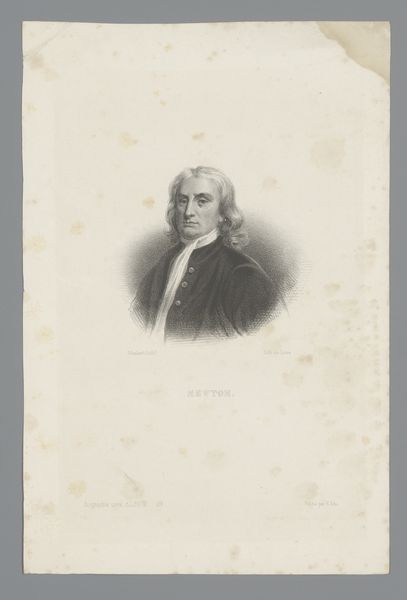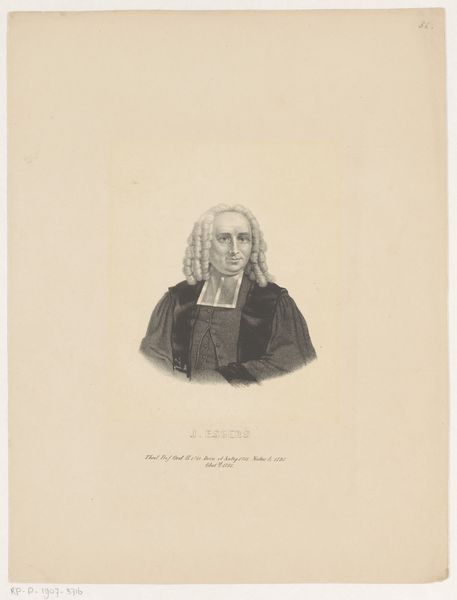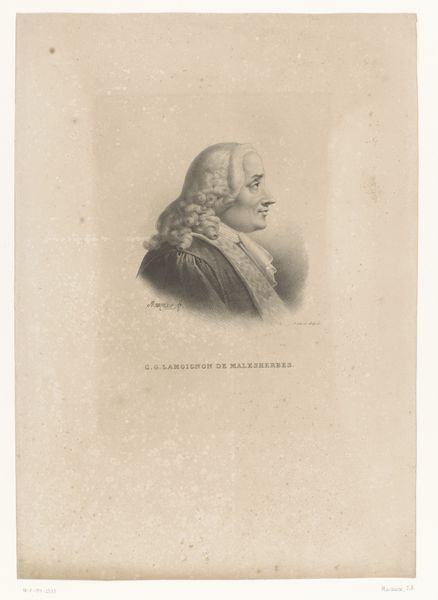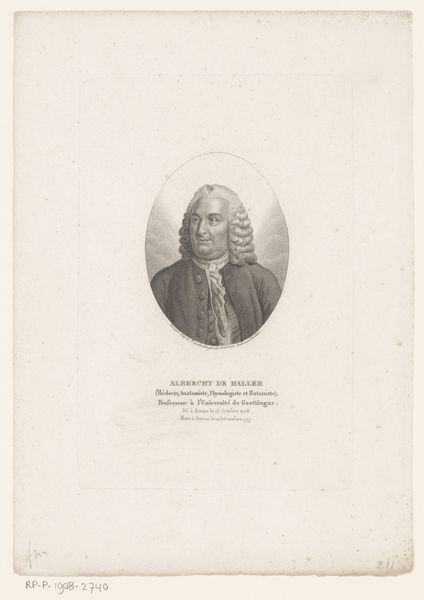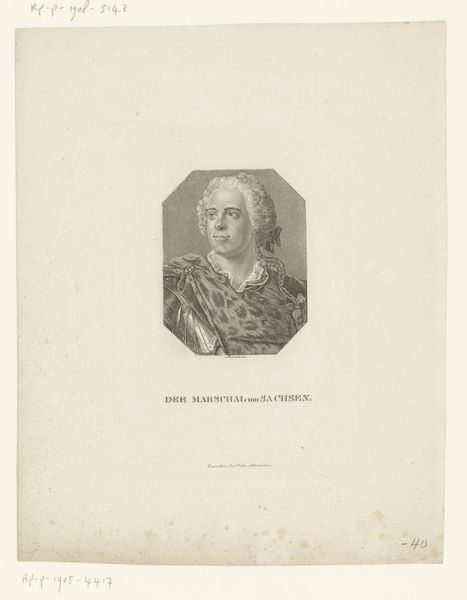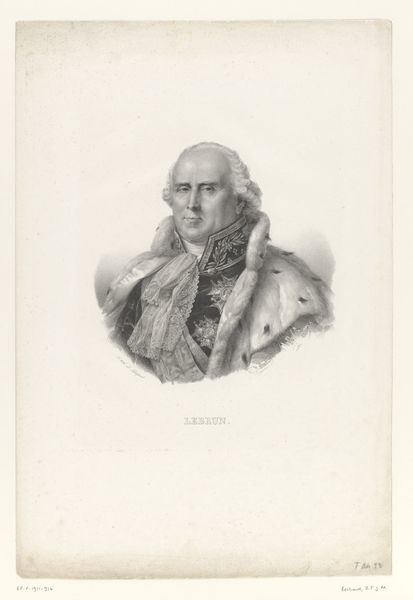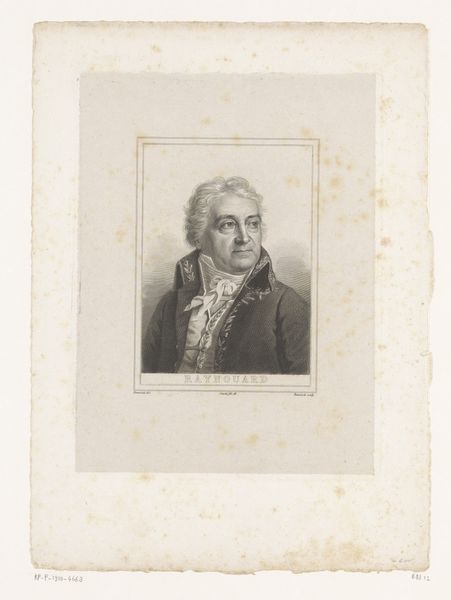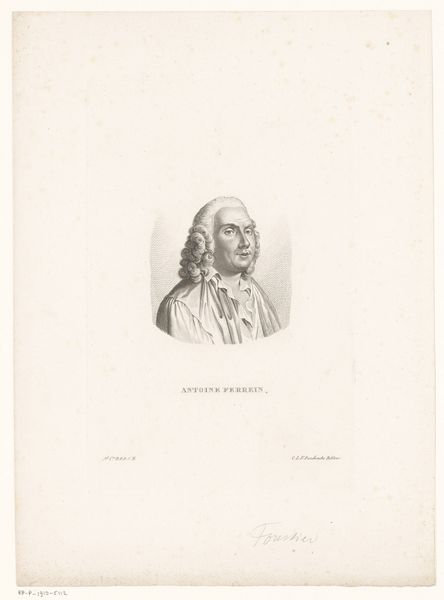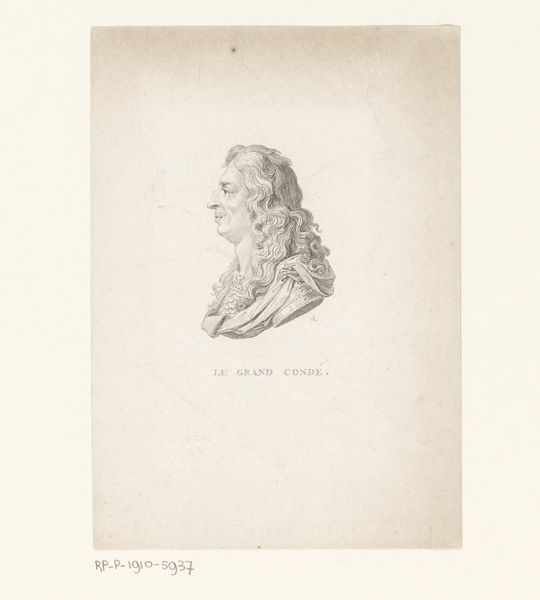
print, engraving
#
portrait
#
neoclacissism
# print
#
history-painting
#
engraving
Dimensions: height 412 mm, width 298 mm
Copyright: Rijks Museum: Open Domain
Curator: This is a print entitled “Portret van Bernard de Jussieu,” dating from between 1816 and 1833, attributed to Pierre Roch Vigneron. Editor: The texture created by the engraving feels so smooth to the eye. He has a solemn, somewhat austere, presence, doesn't he? It has a stark feeling—the man seems disconnected, almost isolated from the world. Curator: Indeed. Vigneron's expert use of the engraving technique, a hallmark of the Neoclassical style, creates this incredible effect. The precision and clarity of the lines form the structure here. This deliberate, clean aesthetic reinforces a sense of rationality and order. The gaze is unwavering. Editor: Absolutely, yet look closer, and the man himself subverts any notions of order. Who was permitted this kind of representation at the time, and why? A historical framing is essential here. Was he revolutionary or reactionary in his work and influence? The almost monochrome presentation serves to make him appear ageless. Curator: He was, in fact, an acclaimed botanist of his era. Observe how the technique captures the very essence of form—shadow defining every contour with incredible accuracy, a nod towards history painting, but it's the realism which stands out for me, which elevates the essence of the subject matter to an enduring classic. The restrained palette actually heightens the focus on form. Editor: Form it might be, but whose form are we invited to valorize? What does this portrait suggest to viewers about power structures, knowledge, and representation in the late 18th century? As a botanist he worked, ostensibly, in service to humankind. Curator: A fair point. Focusing on the artist’s technique however reveals a mastery. He coaxes volume and depth from the flat surface. A beautiful, albeit stark, portrait overall. Editor: Yes. Examining such artworks critically pushes us to confront not just art history, but history itself, and its lasting impact. Thank you for that perspective.
Comments
No comments
Be the first to comment and join the conversation on the ultimate creative platform.
